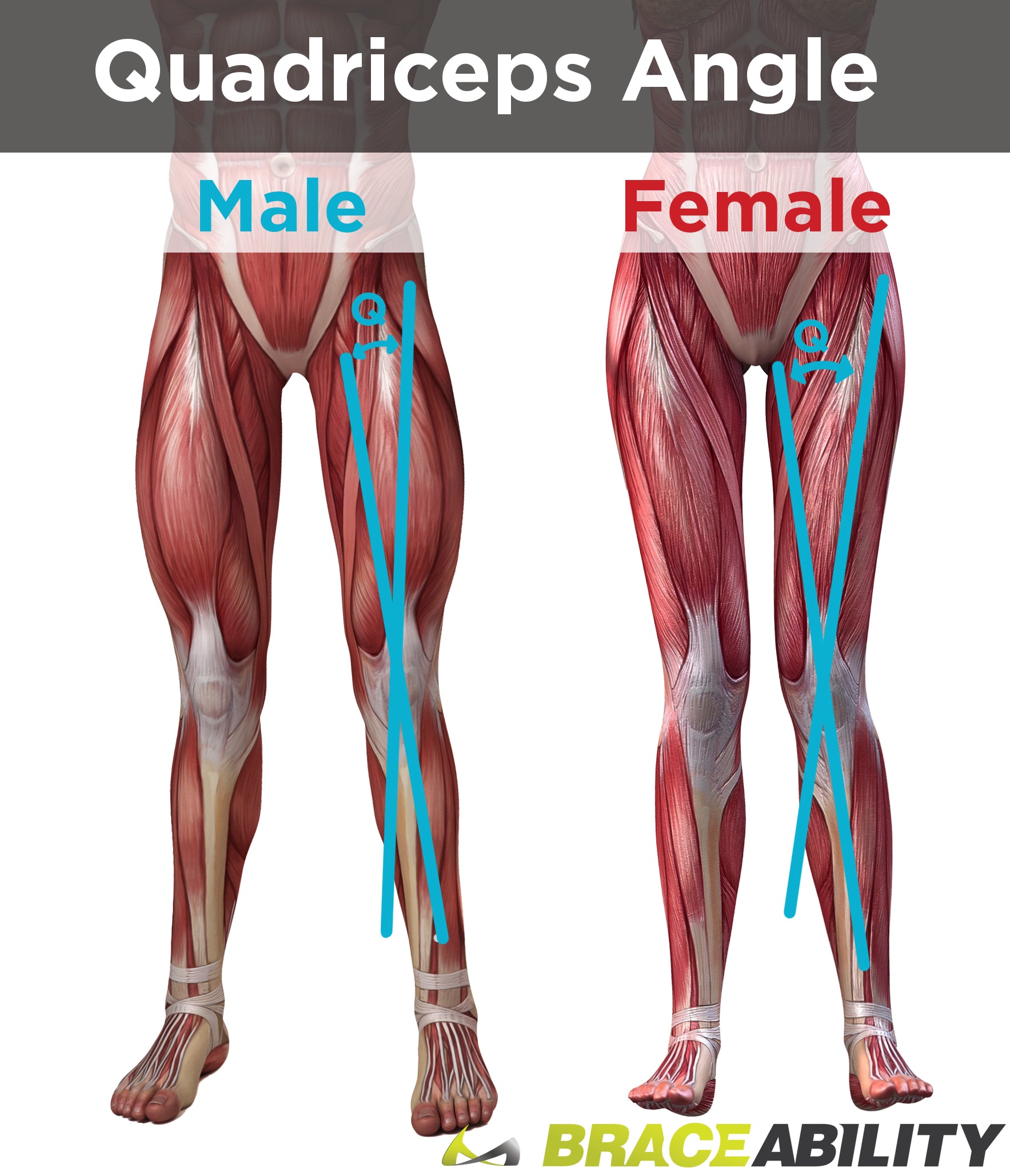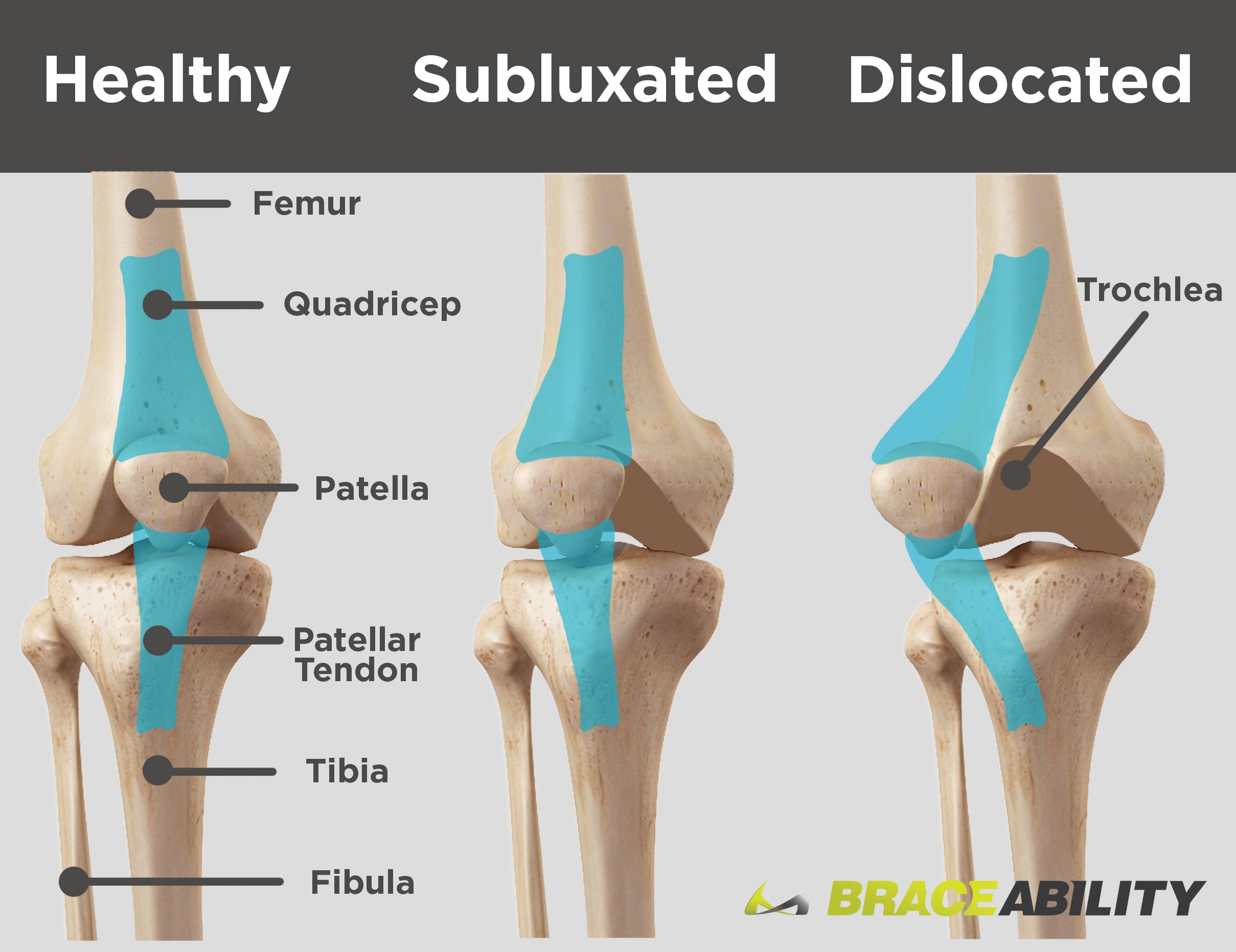What is Subluxation of the Knee?
Patellar Subluxation is a patellar tracking disorder, which occurs when your patella (kneecap) becomes partially laterally (outer knee) or medially (inner knee) dislocated. Normally, your kneecap rests in your patellofemoral groove (trochlea) located at the end of your thigh bone (femur). Your patellofemoral groove is located between a couple bumps at the end of your thigh bone (femoral condyles). Your kneecap should slide up and down in your patellofemoral groove, but during a patellar subluxation, your kneecap will come partially out of this groove.
How Does Patellar Subluxation Feel?
Some people experience very few symptoms during a patellar subluxation, while others experience several debilitating symptoms.
Symptoms of patellar subluxation include the following:
- Your kneecap kind of feels like it is sliding out of place
- You might be able to see kneecap displacement externally
- General knee pain and soreness
- Your knee buckles and cannot support any weight
- Stiffness
- Swelling
- You hear creaking or cracking sounds in your knee
What Causes Patellar Subluxation?

Bone structure - If you have a shallow patellofemoral groove or large Q angle, you are more susceptible to experience a patellar subluxation. The Q angle of your knee is a measurement of the angle between your quadriceps muscles and your patella tendon. This angle provides a lot of useful information about the alignment of your knee joint.There are many potential factors that could lead to patellar subluxation. Your bone structure, muscles, ligaments, tendons, and movement patterns all impact your chance of experiencing a patellar subluxation.
- Weak muscles - Weak muscles around your hip and knee, commonly lead to instability of your kneecap.
- Issues with your soft tissues - If your ligaments and/or tendons are too flexible, they lose their ability to properly hold your kneecap in place. On the other hand, if your soft tissues are too tight, they can pull your kneecap out of its proper place in your patellofemoral groove.
- Poor movement patterns - Sports and other physical activities also put you at risk for patellar subluxation. Running, jumping, or quick twisting motions put you at a higher risk for patellar subluxations.
-
Pain Management
-
Physical Therapy
-
Exercise
-
Weight Loss
-
Braces and Taping
5 Non-Surgical Treatment Options for Patellar Subluxation
Simply resting, icing, and elevating your knee (R.I.C.E. treatment) can help you treat any painful or discomforting symptoms associated with patellar subluxation. Many people also find relief from patellar subluxation symptoms by taking anti-inflammatory pain medications, such as ibuprofen. In addition, it is important to avoid any aggravating activities for a period of time if you experience a patellar subluxation. This will help your injury properly heal.
Physical therapy is a very important part of treatment. Your physical therapist will work with you to improve your range of motion, build muscle, learn appropriate stretches, and fix imbalances in your muscles around your hips and knees.
Exercise is an important component of patellar subluxation treatment. Certain exercises can help strengthen weak muscles surrounding your hips and knees, which promotes stability in your kneecap.
Losing weight (if applicable) can help you alleviate patellar subluxation and several other knee-related conditions. Losing weight reduces the amount of pressure on your knee joint and enhances kneecap stability.
In order to keep your kneecap (patella) in place on a day-to-day basis or during recovery, we strongly recommend taping your knee or wearing a knee brace. Taping or using a brace for patellar subluxation helps immobilize your knee and prevent any unwanted movements in the knee that could further complicate your injury.
Best Braces for Patellar Subluxation
There are specific knee braces designed to treat patellar subluxation and/or patellar dislocation. These patellar subluxation braces provide additional support for your patella during treatment and help lead you to rehabilitation.
Open Patella Knee Brace for Patellar Subluxation
Many people prefer an open patella knee brace when dealing with a subluxed knee because this style of knee brace keeps pressure off your sore kneecap.
This open patella knee sleeve is one of our top selling braces in this style. This simple, pull-on knee sleeve for large legs, features a patella pad that helps your kneecap stay centered in your femoral groove.
For even more support, you might consider this hinged knee brace. The brace’s dual action hinges allow smooth extension and flexion movements while preventing damaging side-to-side motions of your knee. As your knee heals, you can remove the metal hinges from this brace for a more flexible fit. The open patella helps reduce pressure on your sore kneecap, while the opening at the back of your knee (popliteal) improves the flexibility and breathability of this support. This patella subluxation brace also comes in plus-sizes.
Knee Brace With C-Shaped Buttress
The C-shaped buttress is a rubber-like ring around the patella opening, which helps stabilize your kneecap. A brace with a C-shaped buttress is especially helpful if you are experiencing lateral or medial patellar subluxation. This style of support is also good if you are in need of extra knee support for walking downhill, uphill, or on uneven surfaces, such as while hiking.
This patella stabilizing brace is another great option for patellar subluxation support. The C-shaped buttress and four-part strapping system of this patellar subluxation knee brace can help stabilize your kneecap and promotes correct patellar tracking. It also features stays on either side of your knee for an additional layer of support as well as to keep your brace from bunching or rolling.
This short hypoallergenic, lightweight knee brace is perfect for you if you are an active individual who deals with knee pain when walking or jogging. The open patella design of this low profile knee brace improves its flexibility and keeps pressure off your sore kneecap. The C-shaped buttress of this knee brace can be moved for either lateral or medial patellar subluxation. Also, your popliteal (back of knee) will be covered by this knee brace for extra support and compression.
Knee Brace With U-Shaped Buttress
Knee braces with a U-shaped buttress, like this, are great for treating patellar subluxation because they protect your knee joint, improve patellar tracking, and reduce inflammation around your patella. The U-shaped buttress supports your patellar joint and helps your kneecap track as it should.
Band for Patellar Subluxation Treatment
A patella knee band, like this one, sets directly under your patella (kneecap) and puts targeted pressure on your patella tendon, which helps relieve your joints of pressure and treats several knee-related problems. A knee band dramatically reduces pain caused by patellar subluxation, patellofemoral pain syndrome (runner’s knee or jumper’s knee), chondromalacia patella, tendonitis, or other knee conditions affecting your patella.
Not sure what brace you need to treat your patellar subluxation? No worries. Our customer service representatives are here to help. Just give us a call at (866) 712-7808.
Surgery for Patellar Subluxation
If you continually experience patellar subluxation after trying all of these nonsurgical treatment options, you might want to consider surgery to protect your kneecap from subluxation. There are many surgical options to protect yourself from patellar subluxation and other patellar tracking disorders. Find more information about surgical options for patellar subluxation here. We recommend consulting with your physical therapist and doctor about your condition before contemplating any surgical or non-surgical treatment options.














